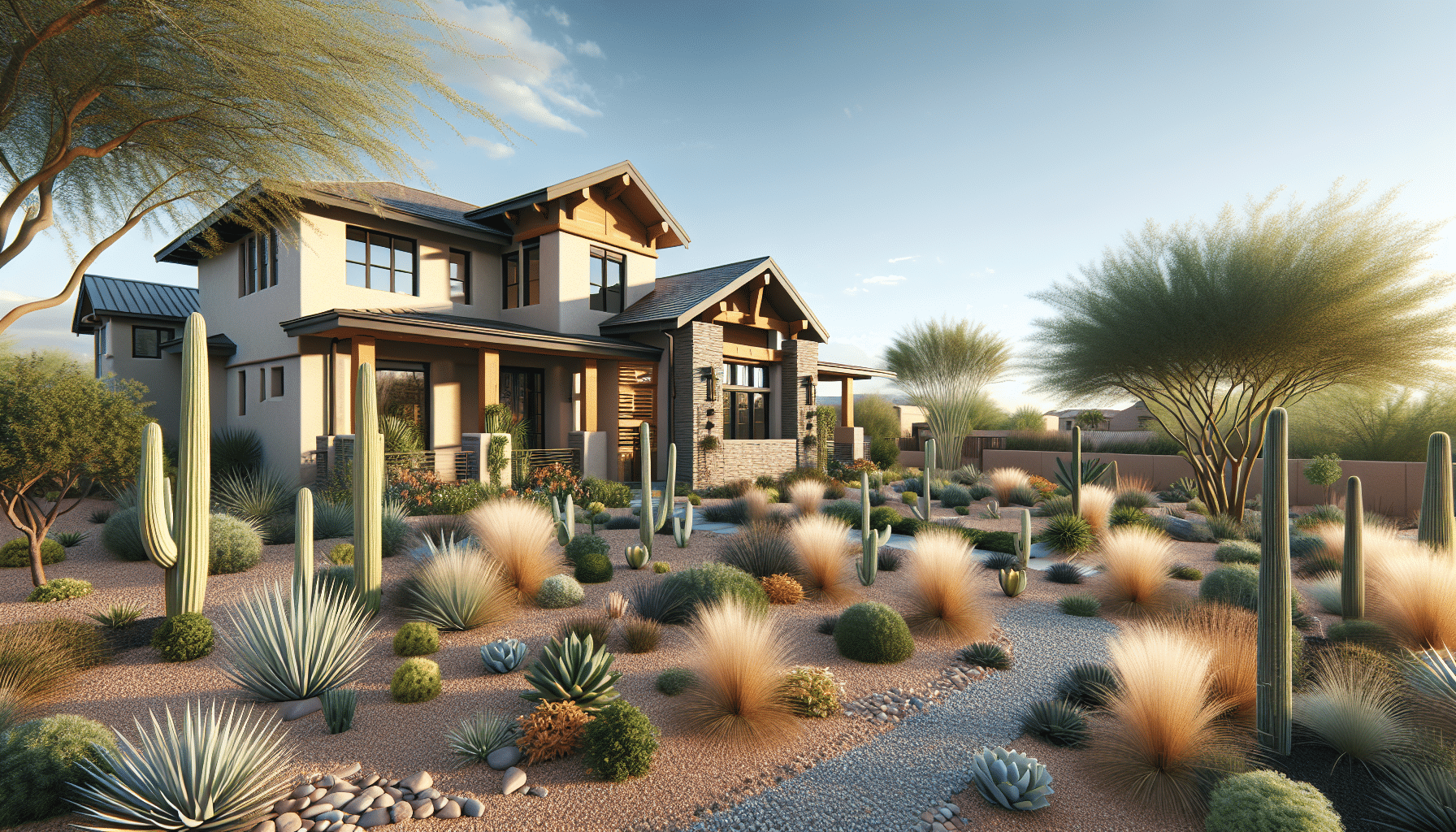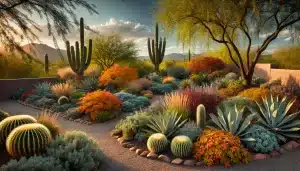Contents
Understanding Xeriscape Design
When planning a xeriscape landscape, the key is to embrace the natural beauty of desert flora. This doesn’t mean your yard has to look barren or uninviting. With the right approach, you can achieve a rich and vibrant outdoor space that highlights the unique beauty of drought-tolerant plants.
Our team at Red Mountain Landscaping emphasizes the use of native plants, which are not only adapted to the local climate but also provide essential habitats for local wildlife. By selecting plants that thrive naturally in Arizona, you can reduce water usage significantly while enjoying a luscious landscape.
Planning Your Xeriscape Garden
A successful xeriscape begins with careful planning. It’s important to start by evaluating your outdoor space and deciding how you want to use it. This initial planning phase includes everything from mapping out hardscape elements to selecting plant species.
Remember, a well-thought-out plan helps avoid unnecessary costs and ensures that each element of your garden works harmoniously. Pay attention to plant spacing, sunlight exposure, and soil type to create a cohesive and thriving landscape.
Choosing the Right Plants
Selecting the right plants for your xeriscape landscape is crucial for success. Focus on plants that are not just drought-tolerant but also aesthetically appealing and suited to your personal taste.
Utilizing a mix of textures, colors, and heights creates visual interest and helps your garden stand out. Local favorites such as agave, yucca, and desert marigold bring a splash of color and intrigue, making your garden both beautiful and sustainable.
Implementing Effective Irrigation Systems
Water conservation is at the heart of xeriscaping. To achieve this, integrating an efficient irrigation system is a must. Drip irrigation is one of the most effective solutions for xeriscapes, delivering water directly to the plant roots.
By using a drip system, you reduce water wastage from evaporation and overspray, ensuring your plants receive the essential hydration they need without excess. We recommend setting timers on your irrigation system to maximize efficiency and further reduce water use.
Incorporating Hardscape Elements
The incorporation of hardscape elements can bring functionality and style to your xeriscape garden. Pathways, patios, and rock formations not only add structure but also reduce the need for excessive plant coverage.
Choose materials that complement the natural surroundings, such as stone or gravel, to enhance the aesthetic appeal. In addition, using permeable materials can help with water drainage and prevent water logging around your plants.
Maintenance Tips for a Flourishing Xeriscape
Although xeriscapes require less maintenance than traditional gardens, some upkeep is necessary to keep your landscape looking its best. Regular tasks such as mulching, pruning, and weeding help maintain plant health and aesthetics.
- Mulching: Apply a layer of organic mulch around plants to retain moisture and regulate soil temperature.
- Pruning: Regularly trim plants to promote growth and remove any dead or damaged foliage.
- Weeding: Keep your garden weed-free to ensure that your plants get the nutrients they need to thrive.
Creating a Wildlife-Friendly Habitat
An added benefit of xeriscaping is the opportunity to create a habitat for local wildlife. By choosing native plants, you provide food and shelter for birds and pollinators, making your garden a haven for biodiversity.
- Bird Baths: Install bird baths to attract local birds and provide them with a water source, enhancing your garden’s ecosystem.
- Butterfly Gardens: Integrate flowering plants that attract butterflies, adding movement and color to your landscape.
Final Thoughts
Designing a xeriscape landscape is an exciting opportunity to embrace sustainable gardening while enhancing the beauty of your home. Ready to start your xeriscape journey? Contact Us at 480-373-9312 or Request a Free Quote today!




